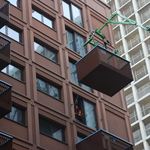Bordercollie
Senior Member
I think it would be very politically unpopular to discontinue a service that has been mandated as essential for God knows how long.If it is a money pit like you claim, who would buy it?
And with a focus on a greener economy, it would be good PR for the government to invest in railways. Plus it can be presented as a make work project after covid to help the economy.
Not sure what Erin O'Toole mandate would look like but I don't think there is a chance that he's going to get elected with a majority mandate anytime soon.
And in a minority, the NDP, Greens and Liberals would not let VIA dissaperar.
With Amtrak Biden in the white house and a Multi billion dollar hole in the capital budget for Amtrak there is a possibility that VIA has an opportunity to tack on to an Amtrak order. It happened with the P42's and the new corridor fleet, what's to say it won't happen again.




